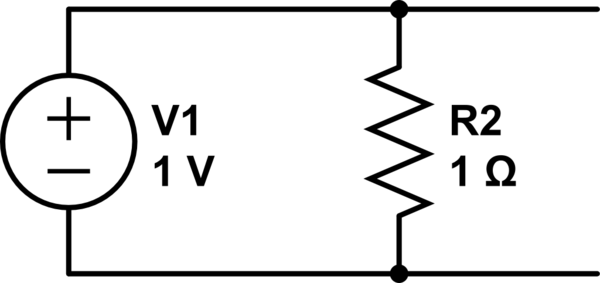I have a basic question on electronics. Why is it that typically a resistor is always in parallel to a current source and is always in series with a voltage source?
As observed in Norton's and Thevenin's theorems.
I have a basic question on electronics. Why is it that typically a resistor is always in parallel to a current source and is always in series with a voltage source?
As observed in Norton's and Thevenin's theorems.
A voltage source has zero internal impedance and, ideally could supply infinite current. To model a more practical realistic voltage source a resistor is added in series. That resistor will limit the short circuit current to (say) 1 amp.
To model this as a current source you can't put a resistor in series because the current source can still generate 1 amp and the open circuit voltage would be infinite. So, if the original voltage source was 10 volts and had a 10 ohm resistor in series, the equivalent current source would be 1 amp in parallel with 10 ohms.
You could always connect a resistor in series with a current source or a resistor in parallel with a voltage source, but here we are just trying to model one of the inherent non-idealistic characteristics of a voltage (or current) source. Namely, the output voltage (or current) changes with the load resistance due to physical limitations in our source. e.g. A 9V battery will decrease in output voltage when trying to provide too many amps.
If you consider a battery (a voltage source):

simulate this circuit – Schematic created using CircuitLab
We put a resistance in series with the source because the output voltage will vary with the load by a simple voltage divider equation. Whereas, if we modeled our source with a resistor in parallel, then the output voltage would always be our ideal voltage (1V below) - not a useful model.

It's the same for the current source. A series resistor won't lessen the current through the load, but a parallel resistor will leech current by the current divider equation.
Because a parrallel resistor would not change the behaviour of the (ideal) voltage source and otherwise.
The sources set the current/voltage and the resistors would not change that